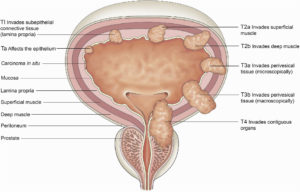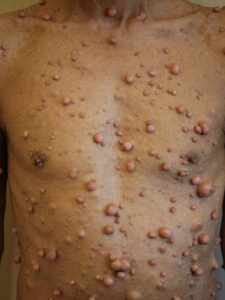IDDM
Type 1 diabetes mellitus (type 1 diabetes, insulin-dependent diabetes mellitus), one of the most prevalent chronic pediatric disorders, is caused by insulin insufficiency resulting from the autoimmunity-mediated death of pancreatic beta cells. Prior to the establishment of the one and only therapeutic option – the lifelong supplementation of insulin or its equivalents – affected youngsters died quickly. Although much research has been conducted on the pathophysiology of type 1 diabetes, the fundamental causes and mechanisms are still not fully understood. The result is a paucity of preventative measures and causative treatments.
Causes of insulin-dependent diabetes mellitus
Absence of insulin production due to autoimmune pancreatic beta-cell death
In type 1 diabetes mellitus (formerly known as juvenile-onset or insulin-dependent), there is no insulin production due to autoimmune destruction of pancreatic beta-cells, presumably initiated by environmental exposure in genetically predisposed individuals. Destruction advances subclinically over months or years until beta-cell mass declines to the point where insulin concentrations are insufficient to control plasma glucose levels. Type 1 diabetes often develops in childhood or adolescence and was until recently the most prevalent variety diagnosed before age 30; however, it can also develop in adults (latent autoimmune diabetes of adulthood, which often initially appears to be type 2 diabetes). Some occurrences of type 1 diabetes, particularly among individuals of color, do not appear to be of an autoimmune character and are deemed idiopathic. Type 1 diabetes accounts for less than 10% of all instances of diabetes.
Pathogenesis of autoimmune beta-cell destruction involves interactions between susceptibility genes, autoantigens, and environmental variables that are incompletely understood.
Susceptibility genes include those within the major histocompatibility complex (MHC)—particularly HLA-DR3, DQB1*0201 and HLA-DR4, DQB1*0302, which are present in >90% of patients with type 1 diabetes mellitus—and those outside the MHC, which appear to regulate insulin production and processing and confer risk of diabetes mellitus in conjunction with MHC genes. Particular communities have a higher frequency of susceptibility genes than others, which explains the higher prevalence of type 1 diabetes in some ethnic groups (Scandinavians, Sardinians).
Beta-cell autoantigens consist of glutamic acid decarboxylase, insulin, proinsulin, insulinoma-associated protein, zinc transporter ZnT8, and other proteins. It is believed that these proteins are exposed or secreted during natural beta-cell turnover or beta-cell injury (e.g., as a result of an infection), triggering largely a T-cell-mediated immunological response that results in beta-cell demise (insulitis). Alpha cells that secrete glucagon remain undamaged. Serum antibodies to autoantigens appear to be a consequence of beta-cell death rather than its cause.
Several viruses, including coxsackievirus, rubella virus, cytomegalovirus, Epstein-Barr virus, and retroviruses, have been associated with the development of type 1 diabetes. Viruses may directly infect and destroy beta cells, or they may indirectly induce beta-cell destruction by exposing autoantigens, activating autoreactive lymphocytes, and mimicking autoantigen molecular sequences that stimulate an immune response (molecular mimicry), or in other ways.
Diet may also have a role. The exposure of newborns to dairy products (particularly cow’s milk and the milk protein beta-casein), excessive levels of nitrates in drinking water, and inadequate vitamin D intake has been related to an increased risk of type 1 diabetes. Early ( 4 months) or late (> 7 months) exposure to gluten and grains stimulates the development of islet cell autoantibodies. The mechanisms underlying these correlations are unknown.
Type 1 vs Type 2 DM
Both types of diabetes result in excessively high blood sugar levels. However, they do it in vastly different ways. As previously stated, type 1 diabetes is an autoimmune illness in which the body produces little or no insulin. According to the Centers for Disease Control and Prevention (CDC), it cannot be prevented.
According to the agency, type 2 diabetes develops when the liver, muscle, and fat cells fail to respond appropriately to insulin and become “insulin resistant.” Glucose is unable to enter cells as efficiently as it once did and instead accumulates in the bloodstream. In type 2 diabetes, the pancreas produces more insulin in response to elevated blood glucose levels. Eventually, the pancreas is unable to produce enough insulin to manage glucose spikes, such as the rise in blood sugar after a meal. According to the CDC, type 2 diabetes accounts for 90 to 95% of all diagnosed cases of diabetes. In many situations, it can be prevented or postponed by dietary and physical activity modifications.

Symptoms
The onset of type 1 diabetes symptoms often takes a few days to weeks. They consist of:
- Enhanced appetite and thirst
- Frequent urination
- Impaired vision
- Exhaustion and weariness
- Weight reduction with no obvious reason or trigger
Anyone experiencing these symptoms should seek medical attention immediately.
One in three children will exhibit the initial symptoms of diabetic ketoacidosis (DKA). This is a potentially fatal disorder in which excessive ketones circulate throughout the body, resulting in acidosis. It requires immediate medical care.
Examples of symptoms include:
- An aroma of fruit on the breath
- Dry or irritated skin
- Nausea or nausea
- Abdominal pain
- Breathing problems
- Confusion and trouble concentrating
A variety of problems might develop over time, resulting in an array of additional symptoms.
Diagnosis
Diagnostic criteria:
One of the following conditions must be met for a diabetes diagnosis:
- FPG ≥126 mg/dL (7.0 mmol/L), OR
- Two-hour plasma glucose (PG) 200 mg/dL (11.1 mmol/L) on an oral glucose tolerance test (OGTT), OR
- HBA1C ≥6.5 percent (48 mmol/mol), OR
- Plasma glucose 200 mg/dL (11.1 mmol/L) in a patient with typical hyperglycemia or hyperglycemic crisis symptoms.
Treatment
General measures
- Keeping your blood glucose level as normal and steady as feasible is a crucial component of your treatment.
- You will be able to control this condition with insulin treatment and a healthy, well-balanced diet, but you will also need to monitor your blood glucose levels periodically to ensure they are neither too high nor too low.
- Your blood glucose levels can be affected by exercise, illness, stress, consuming alcohol, taking other medications, and, for women, fluctuations in hormone levels during their monthly period.
- In most circumstances, you will be required to monitor your blood glucose levels throughout the day, both at home and at work or school, using a simple finger-prick blood test. Depending on the type of insulin treatment you are on, you may need to perform this up to four times per day. There are a variety of blood glucose monitoring methods that do not entail pricking the finger. Discuss your diabetes treatment options with your diabetic care team.
- Normal blood glucose levels are between 4 and 7 mmol/l before meals and below 8.5 mmol/l two hours after meals. Mmol/l stands for millimoles per liter and is used to describe the glucose concentration in your blood.
- There is an alternative way to determine glucose levels without pricking the finger. This device is known as a flash glucose monitor
Blood sugar monitoring
Throughout the day, people with Type 1 diabetes must regularly monitor their blood sugar levels. Maintaining a healthy blood sugar range is the most effective method for preventing health issues. In the following techniques, you can monitor your blood sugar:
You prick your finger and place a small drop of blood on the test strip of the blood glucose meter. Your blood glucose level is displayed on the meter in a matter of seconds. A blood glucose meter is typically the least expensive choice for at-home testing, however, it only provides an instantaneous reading.
There are various types of continuous glucose monitoring (CGM). Most CGMs require the insertion of a tiny sensor under the skin every seven to fourteen days. Some CGMs are implanted by medical professionals. The sensor measures your blood glucose levels continually. Those who use a CGM require fewer fingersticks. CGM devices can be more expensive than fingerstick blood glucose meters, but they provide far more information on your glucose levels, including where they’ve been and where they’re headed. You can set several alerts to notify you if your blood sugar is on the rise or falling.
Your healthcare professional will inform you about the optimal range for your blood glucose levels. It relies on numerous variables, including your:
- Age
- Lifestyle
- General well-being
- Access to diabetes-related supplies and technologies
Insulin
- Individuals with type 1 diabetes must take insulin daily. Typically, insulin is administered through injection.
- Some individuals use an insulin pump. The insulin pump injects insulin through a skin port. This may be easier than stabbing oneself with a needle for some individuals. It may also assist to prevent blood sugar swings.
- Your insulin requirements fluctuate throughout the day. People with type 1 diabetes test their blood sugar periodically to determine how much insulin they require. Diet and exercise can both alter glucose levels.
- Several kinds of insulin exist. Your doctor may have you try multiple medications to determine which one is most effective.
Islet cell transplantation
What problems are associated with type 1 diabetes?
It is essential to treat type 1 diabetes to prevent long-term problems such as:
- Cardiac disease
- Renal disease
- Stroke
- Eye difficulties
- Foot troubles
- Nerve issues
Diabetes and mortality rate
Well-managed diabetes (both type 1 and type 2) minimizes the chance of acquiring diabetes-related complications. Consistently increased blood glucose levels, however, can lead to visual loss, even blindness, end-stage renal disease, and in some circumstances, early death. Regulating blood pressure, lipids (cholesterol), and weight is equally as critical as controlling blood glucose levels. Patients with type 2 diabetes mellitus risk a mortality rate that is three times that of the general population. Cardiovascular disease mortality rates are five times greater among males with diabetes and eight times greater among women with diabetes. Every 1 percent increase in HbA1c (average blood glucose level) is associated with a 21 percent increase in mortality risk.
Prevention
There is no scientifically proven method to avoid type 1 diabetes. A widespread shortage in vitamin D may raise the chance of developing diabetes. However, it has not yet been demonstrated that addressing the deficit can prevent diabetes. Similarly, avoiding cow’s milk throughout infancy may help genetically sensitive infants avoid developing type 1 diabetes. However, there is no conclusive evidence that this protects the condition.



